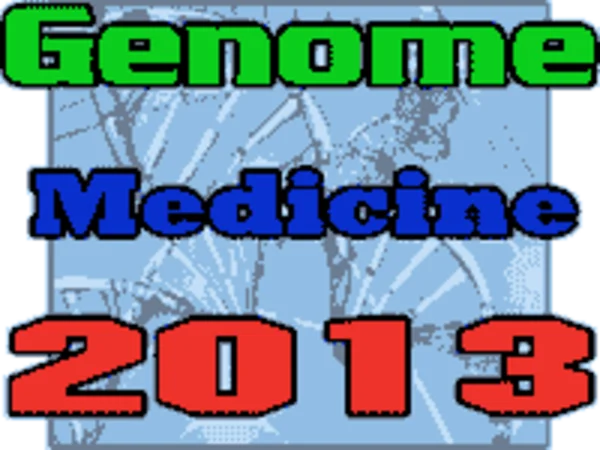-
shifts in human skin and nares microbiota of healthy children and adults
جزئیات بیشتر مقاله- تاریخ ارائه: 1392/07/24
- تاریخ انتشار در تی پی بین: 1392/07/24
- تعداد بازدید: 1177
- تعداد پرسش و پاسخ ها: 0
- شماره تماس دبیرخانه رویداد: -
background: characterization of the topographical and temporal diversity of the microbial collective (microbiome) hosted by healthy human skin established a reference for studying disease-causing microbiomes. physiologic changes occur in the skin as humans mature from infancy to adulthood. thus, characterizations of adult microbiomes might have limitations when considering pediatric disorders such as atopic dermatitis (ad) or issues such as sites of microbial carriage. the objective of this study was to determine if microbial communities at several body sites in children differed significantly from adults. methods: using 16s-rrna gene sequencing technology, we characterized and compared the bacterial communities of four body sites in relation to tanner stage of human development. body sites sampled included skin sites characteristically involved in ad (antecubital/popliteal fossae), a control skin site (volar forearm), and the nares. twenty-eight healthy individuals aged from 2 to 40 years were evaluated at the outpatient dermatology clinic in the national institutes of health’s clinical center. exclusion criteria included the use of systemic antibiotics within 6 months, current/prior chronic skin disorders, asthma, allergic rhinitis, or other chronic medical conditions. results: bacterial communities in the nares of children (tanner developmental stage 1) differed strikingly from adults (tanner developmental stage 5). firmicutes (streptococcaceae), bacteroidetes, and proteobacteria (β, γ) were overrepresented in tanner 1 compared to tanner 5 individuals, where corynebacteriaceae and propionibacteriaceae predominated. while bacterial communities were significantly different between the two groups in all sites, the most marked microbial shifts were observed in the nares, a site that can harbor pathogenic species, including staphylococcus aureus and streptococcus pneumonia. conclusions: significant shifts in the microbiota associated with progressive sexual maturation as measured by tanner staging suggest that puberty-dependent shifts in the skin and nares microbiomes may have significant implications regarding prevention and treatment of pediatric disorders involving microbial pathogens and colonization.
مقالات جدیدترین رویدادها
-
استفاده از تحلیل اهمیت-عملکرد در ارائه الگوی مدیریت خلاقیت سازمانی و ارائه راهکار جهت بهبود
-
بررسی تاثیر ارزش وجوه نقد مازاد بر ساختار سرمایه شرکت های پذیرفته شده در بورس اوراق بهادار تهران
-
بررسی تأثیر سطح افشای ریسک بر قرارداد بدهی شرکت های پذیرفته شده در بورس اوراق بهادار تهران
-
بررسی تأثیر رتبه بندی اعتباری مبتنی بر مدل امتیاز بازار نوظهور بر نقد شوندگی سهام با تأکید بر خصوصی سازی شرکت ها
-
تأثیر آمیخته بازاریابی پوشاک ایرانی بر تصویر ذهنی مشتری پوشاک ایرانی (هاکوپیان)
-
ساخت و مشخصه یابی نانوپودر و بالک نانوساختار کامپوزیتی زیر کونیا- هیدروکسی آپاتیت برای کاربردهای پزشکی
-
بررسی تاثیر رویکرد آب درمانی در طراحی فضاهایی تفریحی
-
پردازش داده های سنجنده آستر به روش نقشه برداری زاویه طیفی و تلفیق آن با اطلاعات زمین شناسی و ژئوشیمی رسوبات رودخانه ای برای پتانسیل یابی مناطق مستعد کانی سازی، شمال شرقی بیرجند
-
بررسی توان های محیطی و نقش آن در توسعه روستایی: مطالعه موردی شهرستان ارومیه
-
تأثیر معیارهای فرهنگی بر سعادت و شقاوت انسانها
مقالات جدیدترین ژورنال ها
-
مدیریت و بررسی افسردگی دانش آموزان دختر مقطع متوسطه دوم در دروان کرونا در شهرستان دزفول
-
مدیریت و بررسی خرد سیاسی در اندیشه ی فردوسی در ادب ایران
-
واکاوی و مدیریت توصیفی قلمدان(جاکلیدی)ضریح در موزه آستان قدس رضوی
-
بررسی تاثیر خلاقیت، دانش و انگیزه کارکنان بر پیشنهادات نوآورانه کارکنان ( مورد مطالعه: هتل های 3 و 4 ستاره استان کرمان)
-
بررسی تاثیر کیفیت سیستم های اطلاعاتی بر تصمیم گیری موفق در شرکتهای تولیدی استان اصفهان (مورد مطالعه: مدیران شرکتهای تولیدی استان اصفهان)
-
بررسی تاثیر مکان شمع، طول شمع و شرایط سرشمع بر تقویت و تثبیت شیروانی های خاکی غیرهمگن
-
مروری بر گیاه پالایی و مکانیسم های مربوطه
-
نقش کنکور آزمایشی در موفقیت دانش آموزان در کنکور سراسری
-
بررسی تأثیر تجارت آزاد بر صادرات محصولات کشاورزی (مطالعه موردی: گندم و پسته)
-
investigating the energy efficiency of tex high energy derivatives with different carbon fuller nano structures under different temperature conditions by dft method




سوال خود را در مورد این مقاله مطرح نمایید :